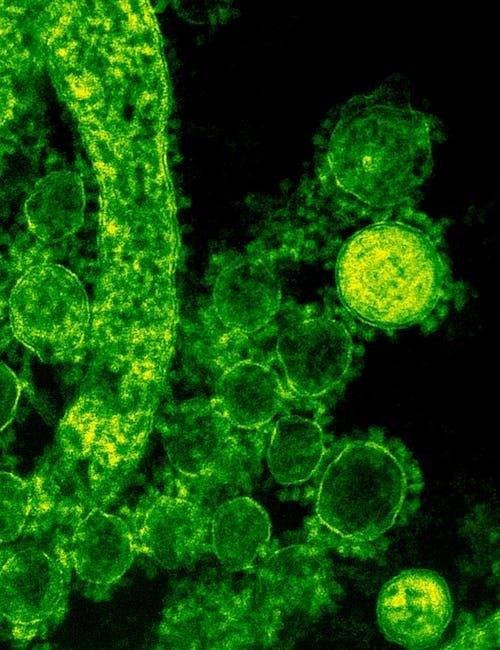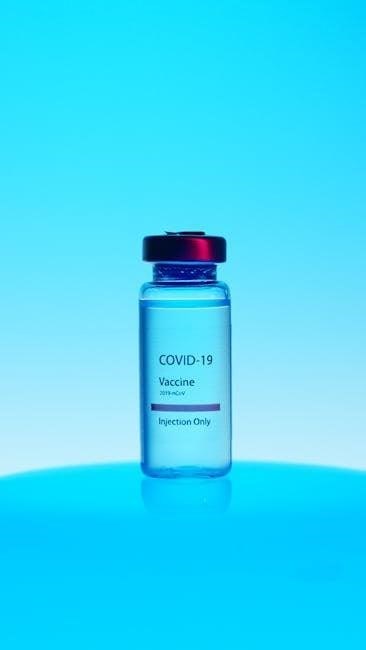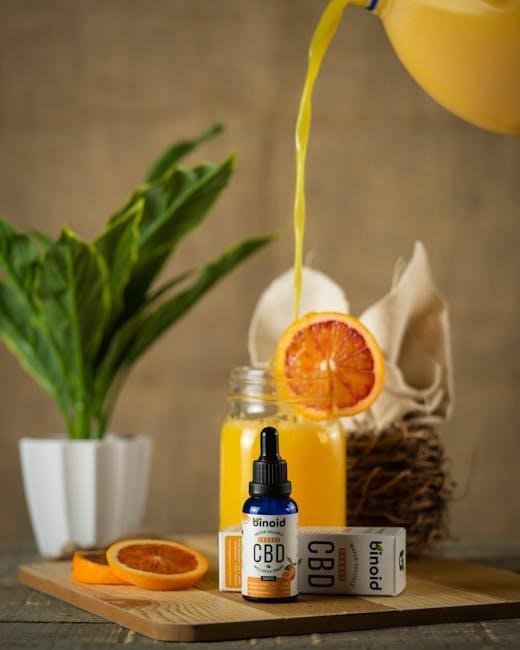Homeopathic medicine is a holistic healing system using highly diluted substances to treat illnesses. Based on the “like cures like” principle, it aims to restore balance naturally. Essential remedies like Aconitum Napellus and Belladonna are widely used for fever and skin conditions, offering a gentle, non-invasive approach to health. This section introduces the foundational concepts and applications of homeopathic medicine, including its historical roots and modern practices.
1.1 Definition and Basic Principles of Homeopathy
Homeopathy is a system of alternative medicine based on the principle of “like cures like,” where highly diluted substances are used to treat symptoms. It aims to restore balance by stimulating the body’s self-healing abilities. The approach is holistic, addressing physical, mental, and emotional health. Key principles include the law of similitude, the single remedy, the minimum dose, and drug proving, ensuring personalized treatment with minimal side effects. This method emphasizes natural healing and patient-specific care.
1.2 Historical Background and Development
Homeopathy was founded in the late 18th century by Samuel Hahnemann, a German physician. It evolved from his experiments with Cinchona bark, leading to the principle of “like cures like.” The system gained popularity in the 19th century, with the publication of Hahnemann’s Organon of Medicine. Over time, homeopathic practices spread globally, with the development of the Essential Drugs List (EDL) in homoeopathy, standardizing remedies like Aconitum Napellus and Belladonna for treating various conditions. This historical foundation laid the groundwork for modern homeopathic medicine.

Common Homeopathic Medicines and Their Uses
Common homeopathic medicines include Aconitum Napellus, Belladonna, and Chamomilla, each addressing specific health conditions. These remedies are widely used for their effectiveness in treating various ailments.

2.1 Aconitum Napellus
Aconitum Napellus, commonly known as monkshood, is a potent homeopathic remedy derived from the plant Aconitum napellus. It is primarily used to treat acute conditions like fever, flu, and infections, where symptoms develop rapidly. Aconitum is often prescribed in potencies such as 30C or 200C. It is particularly effective for initial stages of illnesses, such as sudden onset of high fever, chills, or inflammation. Aconitum is also used for earaches and infections, making it a versatile remedy in homeopathic practice.
2.2 Belladonna
Belladonna, derived from the deadly nightshade plant, is a key homeopathic remedy for acute conditions. It is often used to treat high fever, sudden inflammation, and skin eruptions. Belladonna is effective in addressing symptoms like intense heat, redness, and swelling. It is commonly prescribed in potencies such as 30C or 200C. This remedy is particularly beneficial for conditions like earaches, where pain and inflammation are prominent. Belladonna’s rapid action makes it a first-line treatment in acute, severe cases.
2.3 Arnica Montana

Arnica Montana, derived from the Arnica flower, is a widely used homeopathic remedy for injuries and trauma. It is effective in treating bruises, muscle soreness, and joint pain. Arnica is known for its anti-inflammatory properties and is often used to reduce swelling and promote healing. It is commonly prescribed in potencies such as 30C or 200C. Arnica Montana is also used to alleviate pain after surgery or physical strain, making it a popular choice in first aid and sports injuries. Its versatility and effectiveness have made it a staple in homeopathic medicine.
2.4 Calendula Officinalis
Calendula Officinalis, derived from the marigold flower, is a homeopathic remedy known for its healing properties, particularly for skin conditions; It is effective in treating wounds, burns, and minor injuries, promoting tissue repair. Calendula is also used to address eczema, acne, and minor infections due to its anti-inflammatory and antiseptic properties. It is often used in creams, ointments, or tinctures, making it a versatile remedy for external applications. Calendula Officinalis is widely recommended for its gentle yet effective action on sensitive skin and its ability to promote healing without harsh side effects.
2.5 Chamomilla
Chamomilla, derived from the German chamomile plant, is a homeopathic remedy known for its calming effects. It is widely used to treat teething pain, irritability, and restlessness, particularly in children. Chamomilla also addresses digestive issues like colic and indigestion, often linked to emotional distress. Its anti-inflammatory properties make it effective for skin conditions and menstrual cramps. This versatile remedy is available in various potencies and forms, making it a popular choice for both acute and chronic ailments, especially those accompanied by mood disturbances or sensitivity.

Disease-Specific Homeopathic Remedies
Homeopathic remedies are often tailored to treat specific diseases, such as fever, coughs, earaches, and skin conditions. Remedies like Aconitum Napellus for fever and Belladonna for acute illnesses are commonly used.
3.1 Homeopathic Remedies for Fever
Homeopathic remedies are often used to address fever symptoms, with Aconitum Napellus and Belladonna being prominent choices. Aconitum Napellus is typically used for sudden, high fevers accompanied by restlessness and anxiety. Belladonna is recommended for intense, throbbing fevers with flushed skin and irritability. These remedies aim to alleviate discomfort and support the body’s natural recovery process. Consulting a homeopathic practitioner ensures proper diagnosis and treatment tailored to individual symptoms;
3.2 Homeopathic Remedies for Coughs and Colds
Homeopathic remedies like Allium cepa and Euphrasia are effective for coughs and colds. Allium cepa alleviates runny nose and sneezing, while Euphrasia addresses itchy eyes and nasal discharge. Antimonium tartaricum is used for wet coughs with mucus. These remedies aim to reduce symptoms naturally. Consulting a homeopath ensures personalized treatment. Homeopathic solutions are gentle and can complement conventional care, offering relief without harsh side effects. They are widely used for acute respiratory issues in both children and adults.
3.3 Homeopathic Remedies for Earaches
Homeopathic remedies like Belladonna and Chamomilla are effective for earaches. Belladonna is used for sudden, intense pain with inflammation, while Chamomilla alleviates throbbing pain and irritability. Pulsatilla is recommended for earaches accompanied by thick discharge. These remedies address both the pain and underlying causes, offering natural relief. Consulting a homeopath ensures the right remedy is chosen based on symptoms. Homeopathic treatments are gentle and can complement conventional care, providing comfort for acute earaches in children and adults alike.
3.4 Homeopathic Remedies for Skin Conditions
Homeopathic remedies like Calendula Officinalis and Arnica Montana are effective for skin conditions. Calendula is used for minor wounds and eczema, while Arnica Montana treats bruises and inflammation. Sepia is beneficial for acne and eczema, and Sulphur addresses chronic skin issues like psoriasis. These remedies promote natural healing without harsh chemicals, offering relief for various skin ailments. Consulting a homeopath ensures personalized treatment, making homeopathy a gentle approach for skin health.

Essential Drugs List in Homeopathy
Essential homeopathic drugs include Aconitum Napellus for fever, Belladonna for skin conditions, Arnica Montana for injuries, and Chamomilla for teething pain. These remedies are widely used.
4.1 List of Essential Homeopathic Medicines
The essential homeopathic medicines include Aconitum Napellus (30C, 200C), Belladonna (30C, 200C), Arnica Montana (30C, Q), and Calendula Officinalis (30C, ointment).
- Aconitum Napellus ⎻ Used for fever and acute conditions.
- Belladonna ⏤ Effective for skin issues and inflammation.
- Arnica Montana ⏤ Commonly used for injuries and bruises.
- Calendula Officinalis ⎻ Applied topically for wound healing.
These remedies are widely recognized for their therapeutic benefits and are often included in homeopathic first aid kits.
4.2 Potencies and Forms of Homeopathic Medicines
Homeopathic medicines are available in various potencies, such as 3X, 6X, 30C, 200C, and 1M. Potency indicates the degree of dilution and succussion. Common forms include pellets, tinctures, ointments, and mother tinctures. Pellets are the most popular, while ointments are used for skin conditions. Potencies like 30C and 200C are often recommended for acute and chronic conditions, respectively. The form and potency are chosen based on the ailment’s severity and the patient’s sensitivity.

How to Prepare Homeopathic Medicines
Homeopathic medicines are prepared from plants, minerals, and animals through potentization and succussion. The process involves repeated dilution and shaking to enhance therapeutic properties while minimizing side effects.
5.1 Sources of Homeopathic Medicines
Homeopathic medicines are sourced from plants, minerals, animals, and occasionally diseased tissues. Plants like Aconitum napellus and Arnica montana are common. Minerals such as sulfur and silica are also used. Animal-derived substances include honey and venom. These sources are processed through potentization and succussion to create remedies. The materia medica details each substance’s therapeutic properties, ensuring safe and effective treatment for various conditions, from acute illnesses to chronic diseases.
5.2 Potentization and Succussion Process

Potentization involves diluting raw substances to enhance their therapeutic properties. Succussion, a vigorous shaking process, is applied between each dilution step. This process aims to release the substance’s energetic properties, making it safer and more effective. Homeopathic medicines are typically diluted to potencies like 6X, 30C, or 200C. The higher the potency, the more diluted the substance, believed to intensify its healing effects without harmful side effects, aligning with the principle of minimal dose in homeopathic practice.

Safety and Efficacy of Homeopathic Medicines
Homeopathic medicines are generally considered safe due to high dilution, reducing side effects. Efficacy varies; some studies support their use, while others remain inconclusive, sparking debate.
6.1 Controversies Surrounding Homeopathy
Homeopathy faces significant controversy, with critics questioning its scientific validity due to the high dilution of substances. Some studies suggest placebo effects, while others find no evidence beyond chance. Regulatory bodies vary in recognition, and the lack of standardized research fuels debates. Despite this, many patients report positive outcomes, leading to ongoing discussions about its role in healthcare.
6.2 Evidence-Based Research on Homeopathy
Research on homeopathy yields mixed results, with some studies suggesting efficacy for specific conditions like allergies and arthritis, while others find no significant effect. Systematic reviews often highlight methodological limitations and variability in outcomes. Meta-analyses, such as those by Cochrane, typically conclude that the evidence does not support homeopathy as an effective treatment for most ailments. However, some studies report positive outcomes, sparking ongoing debate about its validity and role in healthcare.

How to Use Homeopathic Remedies
Homeopathic remedies are typically taken in pellet or liquid form, under the tongue, in a clean, dry mouth. Avoid food, drink, or strong-smelling substances before and after. Store in a cool, dark place to preserve potency.
7.1 Dosage and Administration
Homeopathic remedies are typically administered under the tongue, allowing absorption through the mucous membranes. Ideal dosage varies, but standard potencies like 30C or 200C are common. For acute issues, doses may be taken every 15 minutes to an hour, while chronic conditions require less frequent administration. Avoid food, drink, or strong-smelling substances 15-30 minutes before and after dosing. Remedies should be stored in a cool, dark place to maintain potency. Always follow specific guidance from a homeopathic practitioner for personalized treatment plans.
7.2 Precautions and Contraindications
Homeopathic remedies are generally safe but should be used with caution. Avoid strong-smelling substances, coffee, and mint before dosing. Remedies may not be suitable for severe allergies or chronic conditions without professional guidance. Pregnant women and breastfeeding mothers should consult a practitioner. Homeopathy is not a substitute for emergency medical care. Store remedies away from heat, light, and moisture to preserve potency. Individual sensitivity may vary, so monitor symptoms and adjust usage accordingly. Always seek advice from a qualified homeopath for personalized treatment plans.
Homeopathic medicine offers a natural, gentle approach to health, emphasizing individualized treatment. While it is widely used for various ailments, its effectiveness varies, and scientific evidence remains debated. Homeopathy should complement, not replace, conventional medicine in severe cases. Always consult a qualified practitioner for personalized care. By understanding its principles and limitations, individuals can make informed decisions about its role in their healthcare journey, ensuring safe and appropriate use of homeopathic remedies.

